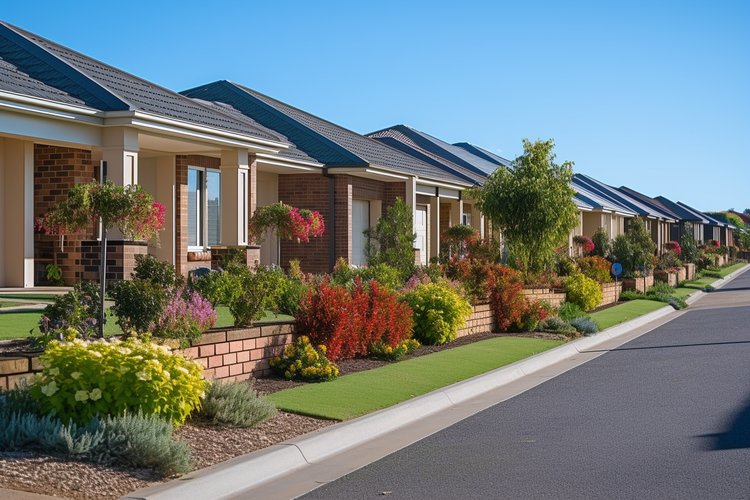Reimagining Urban Infill: The New Wave of Pocket Neighborhoods
Real estate developers are turning their attention to an innovative concept that's reshaping urban landscapes: pocket neighborhoods. These small-scale communities, typically consisting of 8-12 homes clustered around a shared green space, are gaining traction as a solution to urban density challenges. With a focus on fostering community connections and maximizing land use efficiency, pocket neighborhoods are emerging as a compelling alternative to traditional suburban developments and high-rise apartments.

These developments typically feature smaller homes arranged around a common area, often with front porches facing the shared space. The design prioritizes pedestrian access and limits car traffic to the periphery, creating a safe, walkable environment. As urban areas grapple with housing shortages and the need for sustainable development, pocket neighborhoods offer a unique solution that bridges the gap between single-family homes and multi-unit dwellings.
Addressing Urban Density Challenges
One of the primary advantages of pocket neighborhoods is their ability to increase density without sacrificing the feel of a single-family home community. In many cities, zoning laws have traditionally favored either low-density single-family homes or high-density apartment buildings, leaving little room for middle-ground options. Pocket neighborhoods fill this gap by offering a compromise that can appeal to both residents and city planners.
By utilizing land more efficiently, these developments can help combat urban sprawl and reduce infrastructure costs for cities. The compact nature of pocket neighborhoods also aligns with the growing demand for walkable communities, potentially reducing reliance on cars and promoting a more sustainable lifestyle. For urban planners, this presents an opportunity to revitalize underutilized parcels of land within existing neighborhoods, enhancing the overall urban fabric.
The Financial Implications for Investors and Homebuyers
From an investment perspective, pocket neighborhoods present an intriguing opportunity. The lower land requirements per unit compared to traditional single-family developments can potentially lead to higher returns on investment. Additionally, the unique community aspect of these neighborhoods can command premium prices, especially in desirable urban locations.
For homebuyers, pocket neighborhoods offer a more affordable entry point into sought-after areas where single-family homes might be out of reach. The shared spaces and community-oriented design can also lead to reduced maintenance costs and energy savings, further enhancing the financial appeal. However, it’s important to note that the niche nature of these developments may impact resale value, and potential buyers should carefully consider long-term market trends.
Design Considerations and Community Building
The success of pocket neighborhoods hinges on thoughtful design that balances privacy with community interaction. Architects and developers must carefully consider factors such as sight lines, outdoor spaces, and the positioning of homes to create a sense of both openness and intimacy. The shared common area serves as the heart of the community, often featuring gardens, playgrounds, or gathering spaces that encourage neighborly interactions.
This emphasis on community building can lead to stronger social connections among residents, potentially addressing issues of isolation that are common in urban environments. The design also tends to attract a diverse mix of residents, from young families to retirees, creating multi-generational communities that can be mutually supportive.
Regulatory Hurdles and Implementation Challenges
Despite the potential benefits, developers face several challenges when implementing pocket neighborhood concepts. Zoning regulations in many cities are not equipped to handle this hybrid form of development, often requiring variances or special approvals. This can lead to lengthy and costly approval processes, potentially deterring some developers from pursuing these projects.
Additionally, concerns about parking, traffic, and the impact on surrounding property values can lead to resistance from existing residents. Successful implementation often requires extensive community engagement and education to address these concerns and demonstrate the benefits of pocket neighborhoods.
The Future of Pocket Neighborhoods in Urban Planning
As cities continue to grapple with housing affordability and sustainability issues, pocket neighborhoods are likely to play an increasingly important role in urban development strategies. Their ability to create density without sacrificing quality of life aligns well with the goals of many urban planners and policymakers.
Looking ahead, we may see adaptations of the pocket neighborhood concept to fit various urban contexts, from infill developments in established neighborhoods to larger-scale new communities on the urban fringe. The integration of smart home technologies and sustainable building practices could further enhance the appeal of these developments, positioning them as a forward-thinking solution to urban housing challenges.
In conclusion, pocket neighborhoods represent a compelling reimagining of urban infill development. By blending the best aspects of single-family living with the efficiency of higher-density housing, they offer a unique solution to the complex challenges facing our cities. As this trend continues to evolve, it has the potential to reshape urban landscapes and redefine community living for the 21st century.





